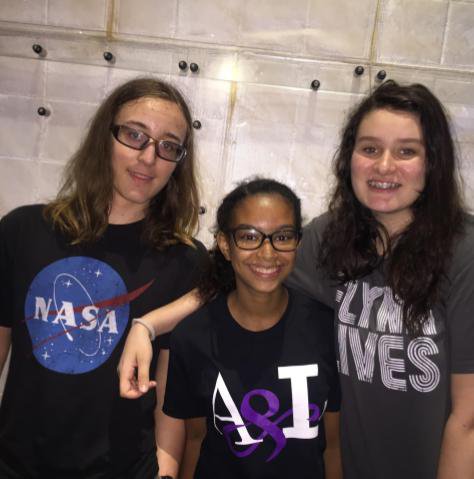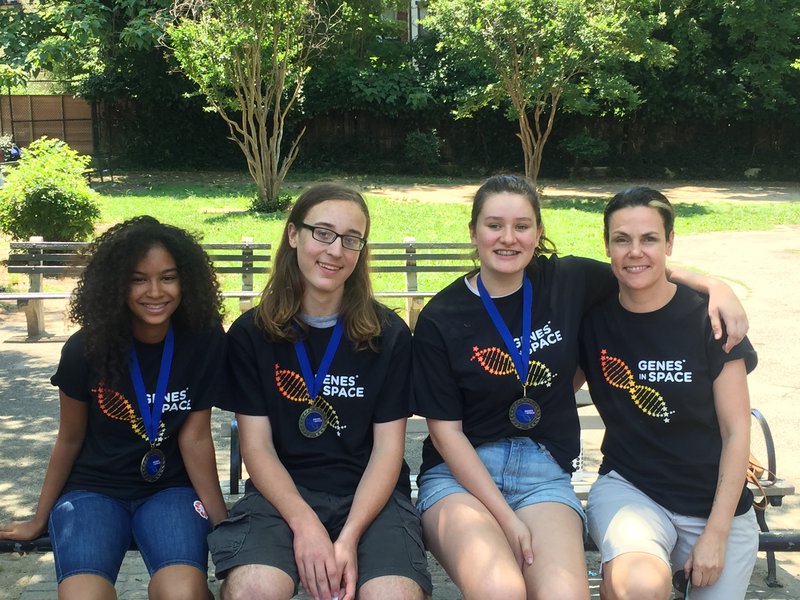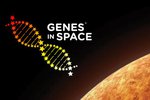GiS Spotlight: Junior Scientists Kaya Slawecka, Maveric Muchowski, and Jordan Gray
The Junior Scientist Award recognizes the top five outstanding proposals by middle school teams. Kaya Slawecka (13), Maveric Muchowski (14), and Jordan Gray (13) attend Arts & Letters, a public school in Brooklyn, NY. Their teacher, Lisa Lowenstein, introduced the students to Genes in Space after attending a recent workshop at Math for America. Here Kaya, Maveric, and Jordan share some insights from their Genes in Space experience.

Briefly explain your experiment:
Our experiment is looking to find if there is a correlation between the stress from being an astronaut on the ISS and stress and gene expression from epigenetic markers in the astronauts’ DNA.
Why did you choose to participate in Genes in Space?
We first heard about Genes in Space from our science teacher, Lisa Lowenstein, who went to a meeting about Genes in Space and brought back to school a pamphlet, and assembled a team of three interested 8th graders.
How did you choose your topic?
Our main plan for coming up with an experiment was to find different problems astronauts face in space, and then just jot down the problem and maybe a solution in a Google doc.
After spending some time looking for problems, we came across an article from The Guardian: “Isolation and hallucinations: the mental health challenges faced by astronauts”. The article posed a new type of problem we hadn’t thought of at all, the mental effects of being in space, and we were really interested.
We started to do some research that was specifically looking at psychology in space, and we started to brainstorm ideas for solutions. But to find a solution, we had to know the cause, and there were really two large factors in space we could find and think of, isolation and stress. When looking at stress, we were thinking how would it affect an astronaut's body, and we found an article from the National Institute of Health, “Stress Hormone Causes Epigenetic Changes”, and a whole new idea was unearthed.
The process of epigenetics was exactly what we were looking for, and fit our idea perfectly. What was really nice is that epigenetics was not an idea one of us came up with from the start; it was an idea we all found through research.
What did you gain by participating in Genes in Space?
During the process of researching for our experiment, we learned a lot more about problems that astronauts face in space, and we learned about epigenetics, a topic all of us were unfamiliar with. We used a miniPCR system to get an idea of the equipment we would be using.
Do you have any advice for future Genes in Space contestants?
Just try to be creative as possible. The people that will do well will think outside the box, they will think differently, and that’s what might give them the upper hand. Not to sound cliche, but winning an award isn’t everything, there is so much to learn from it even if you don’t win. Before we found out that we won a junior science award, we were satisfied with what we did. We learned new things, and that is what mostly mattered to us.

Congratulations to Kaya, Maveric, and Jordan from the Genes in Space team!


